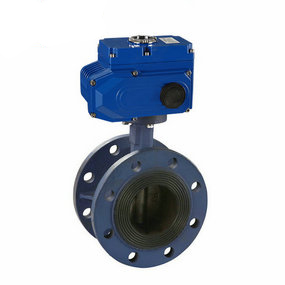Causes of valve sealing surface damage
Because the sealing element plays the role of cutting off and connecting, adjusting and distributing, separating and mixing media on the valve channel, the sealing surface is often corroded, eroded, worn and easily damaged by the media.
There are two reasons for the damage of the sealing surface: artificial damage and natural damage. Man made damage is caused by poor design, poor manufacturing, improper material selection, improper installation, poor use and maintenance. Natural damage refers to the wear of the valve under normal working conditions and the damage caused by the inevitable corrosion and condition of the sealing surface caused by the medium.
The causes of sealing surface damage can be summarized as follows.
1. The processing quality of the sealing surface is poor. The main defects are cracks, pores and slag inclusion on the sealing surface, which are caused by improper selection of surfacing and heat treatment specifications and poor operation during surfacing and heat treatment; The hardness of the sealing surface is too high or too low, which is caused by incorrect material selection or improper heat treatment; The uneven hardness and corrosion resistance of the sealing surface are mainly caused by blowing the bottom metal to the top during surfacing, which dilutes the alloy composition of the sealing surface. Of course, there are also design problems.
2. Damage caused by improper modeling and poor operation. It is mainly manifested in that the valve is not selected according to the working conditions, and the block valve is used as a throttle valve, which results in excessive closing specific pressure, too fast closing or untight closing, resulting in erosion and wear of the sealing surface.
3. Improper installation and poor maintenance lead to abnormal operation of the sealing surface, faulty operation of the valve, and premature damage of the sealing surface.
4. Chemical corrosion of medium. The medium around the sealing surface will directly react with the sealing surface and corrode the sealing surface without generating current.
5. Electrochemical corrosion. The contact of sealing surfaces with each other, the contact of sealing surfaces with the closing body and valve body, the concentration difference of medium, oxygen concentration difference and other reasons will produce potential difference, which will lead to electrochemical corrosion, resulting in corrosion of the sealing surface on the anode side.
6. Erosion of media. It is the result of wear, erosion and cavitation of the sealing surface when the medium flows. At a certain speed, the floating particles in the medium collide with the sealing surface, causing local damage; High speed hydraulic medium directly washes the sealing surface, causing local damage; When the medium is mixed and partially vaporized, bubbles will burst and impact the surface of the sealing surface, causing local damage. The sealing surface will be strongly etched by the condition of the medium and the alternate action of chemical corrosion.
7. Mechanical damage. The sealing surface will be scratched, bumped, squeezed and damaged during the opening and closing process. The atoms between the two sealing surfaces penetrate each other under the action of high temperature and high pressure, resulting in adhesion. When the two sealing surfaces move with each other. The adhesion is easy to pull and tear. The higher the surface roughness of the sealing surface, the easier this phenomenon occurs. During the closing process of the valve, the valve disc will bump and crush the sealing surface during the reseating process, causing local wear or indentation of the sealing surface.
8. Fatigue damage. In the long-term use of the sealing surface, under the action of alternating load, the sealing surface will be fatigue, crack and delamination. After long-term use, rubber and plastic are prone to aging, resulting in poor performance.
It can be seen from the above analysis of the causes of damage to the sealing surface that to improve the quality and service life of the valve sealing surface, appropriate sealing surface materials, reasonable sealing structure and processing methods must be selected
Previous: Technical specifications for main technical performance of valves
Next: Analysis of two serious drawbacks in valve industry

